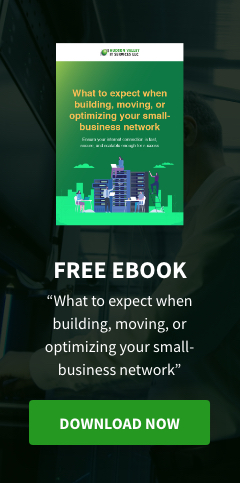Can you remember the last month that passed without a headline-grabbing data breach? All too often it’s because data wasn’t properly secured in the cloud. However, it’s a common misconception that simply storing data in the cloud is inherently less safe. In reality, it’s not very different from on-premises security, which is to say that the protective measures you have in place are really what’s important.
By adopting the right approach, understanding the risks, and partnering with the right vendors, your business’s migration to the cloud can boost cybersecurity and compliance a thousand-fold. Dependable cloud providers have access to the technology and expertise that is out of reach for the vast majority of SMBs. They’ll be familiar with the best practices for securing your data online, and their reputation is at stake just as much as yours is.
Why you need a data-governance framework
Data governance is the protection and management of digital information within enterprise environments. It deals with the confidentiality, integrity, and availability of every digital asset by defining risk and establishing the necessary cybersecurity and compliance controls to address those risks.
Ideally, data governance is the responsibility of the chief information officer (CIO), although smaller companies often outsource the task to an IT consulting firm.
Classifying your digital assets
If you don’t take the time to understand your data and where it resides, it’s just a matter of time before sensitive information becomes accessible to the wrong people. When migrating operations to the cloud, you’ll need to identify which files and records will be processed and stored remotely. In fact, some laws and regulations require this.
For example, some information might be publicly available, and moderately sensitive data might be residing in a public cloud service. Highly confidential data, such as personally identifiable information (PII), payment card information, or patient health information (PHI) will be better suited to an onsite server or in a private cloud.
Although one of the oft-cited benefits of cloud computing is that it’s global and accessible from anywhere, certain types of data come with strict regional storage requirements. If that’s the case, then your cloud provider will need to be prepared to offer service level agreements (SLAs) that match your location requirements.
Protecting your data in the right environment
Beyond the physical location of your data, there are other factors to consider. For example, public cloud services like Amazon AWS or Microsoft Azure SQL use something called persistent data storage, which means data is more vulnerable. In a private cloud or local server, your data is typically tied to a single server or hard drive.
First and foremost, you need to define robust security policies and implement user access rights around them. These may include password policies and clear definitions of which channels certain data categories may be transmitted over. When it comes to cloud security, the human element is usually the weakest link, so it’s imperative you train your staff and ensure that they understand the value of your policies and how to adhere to them.
To meet your data-protection requirements, you should also encrypt all the information stored in the cloud. And finally, you must have around-the-clock monitoring to proactively protect data from threats both within and beyond your traditional perimeter security. After all, hackers never rest, so neither can your cybersecurity.
Hudson Valley IT Services LLC helps businesses in Middletown and East Rutherford build secure and scalable cloud infrastructures that drive success. Call us today to schedule your first consultation.
Like This Article?
Sign up below and once a month we'll send you a roundup of our most popular posts


